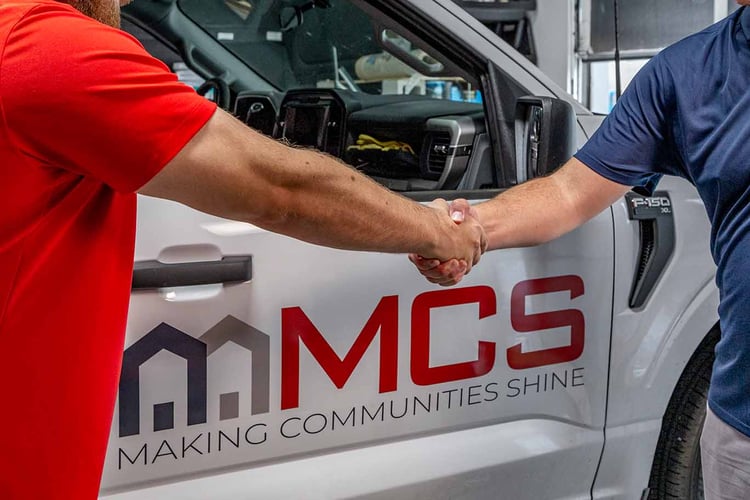Keep These 4 Home Areas in Mind to Help You Age in Place
How to Make Your Home Aging-in-Place Ready: Key Features for Safety and Comfort
1. Entryways, Doorways, Thresholds and Walkways
Wider Doorways - Standard doorways can be too narrow for wheelchairs or walkers. ADA guidelines recommend doorways be at least 36 inches wide to allow for comfortable access. Wider doorways make it easier for individuals with mobility aids to enter and move through the home without difficulty.
Smooth, Non-Slip Thresholds - Thresholds—the raised edges at the base of a door—can create tripping hazards or barriers for wheelchairs. Consider installing low-profile or beveled thresholds that provide smooth transitions between indoor and outdoor spaces. Ensure the materials used are non-slip to prevent falls, especially in areas exposed to rain or moisture.
Accessible Walkways - Walkways leading to the home should be smooth, even, and wide enough (at least 48 inches) to accommodate a wheelchair or walker. Paving materials like concrete or pavers should be well-maintained and free of cracks or uneven surfaces to prevent tripping hazards. Additionally, the walkway should have a slight slope for water drainage but remain comfortable for wheelchairs.
Proper Lighting - Adequate lighting around entryways and along walkways is crucial for visibility and safety, especially at night. Motion-sensor lights or dusk-to-dawn lighting can help illuminate these areas without requiring manual activation, providing extra convenience and security for aging residents.
2. Bathroom Accessibility
Upgrade to Non-Slip Flooring - Floors can quickly become hazardous with spills or just everyday wear. ADA-compliant non-slip flooring is essential for preventing falls, particularly in areas like kitchens, bathrooms, and hallways. Choose slip-resistant materials like textured vinyl, rubber, or cork, which not only provide extra grip but also offer a softer surface to reduce the impact of a fall.
Install Handrails and Grab Bars - Handrails along staircases, in hallways, and in bathrooms offer critical support. For added stability, install grab bars near toilets, bathtubs, and showers. These features give aging residents something to hold onto when getting in and out of slippery or confined spaces. Opt for sleek, modern designs that blend seamlessly with your home’s décor while providing the needed safety.
3. Kitchen Accessibility
Side-by-Side or French Door Refrigerators - These refrigerator designs are more accessible than top-freezer or bottom-freezer models, as they allow access to both the fridge and freezer at arm level without excessive bending or reaching. French door refrigerators offer the added benefit of wider, adjustable shelving.
Seated Workspaces - Creating a space where the individual can sit while performing kitchen tasks is important for those who may have difficulty standing for long periods. Consider installing a pull-out shelf or lower counter area where someone can sit and prep meals comfortably.
Automatic Shut-Off and Smart Technology - Smart appliances and automatic shut-off features offer added safety. Stoves with a timed auto shut-off or smart refrigerators and ovens that can be controlled via a smartphone allow aging residents or caregivers to manage appliances remotely, reducing risks and improving convenience.
4. Bedroom Accessibility
Grab Bars Near the Bed - Installing grab bars or rails near the bed provides extra support for individuals with mobility issues. Bed rails can assist in getting in and out of bed and prevent falls during the night.
Smart Home Integration - Smart technology can enhance accessibility and convenience. Consider installing voice-activated or remote-controlled systems for lights, temperature control, and even blinds or curtains. These features allow aging residents to manage their bedroom environment without needing to get up.
Accessible Storage Solutions - Lower dressers and nightstands with easy-to-reach drawers or shelving make personal belongings accessible without bending or reaching. Avoid furniture with sharp edges; rounded or soft-edged designs help reduce injury risk.
Seating and Rest Areas - Incorporate comfortable seating options, such as a sturdy chair with arms or a bench, where the resident can sit to dress, rest, or perform other tasks. Seating areas should be stable and easy to get in and out of without assistance.
Emergency Call Systems - Consider installing a simple call system or placing a phone near the bed that can be easily reached in case of an emergency. Smartwatches, alarms, or voice-activated systems that can summon help quickly provide added peace of mind.


/Rehab-Center-Front-of-House-After-sm.jpg?height=500&name=Rehab-Center-Front-of-House-After-sm.jpg)

